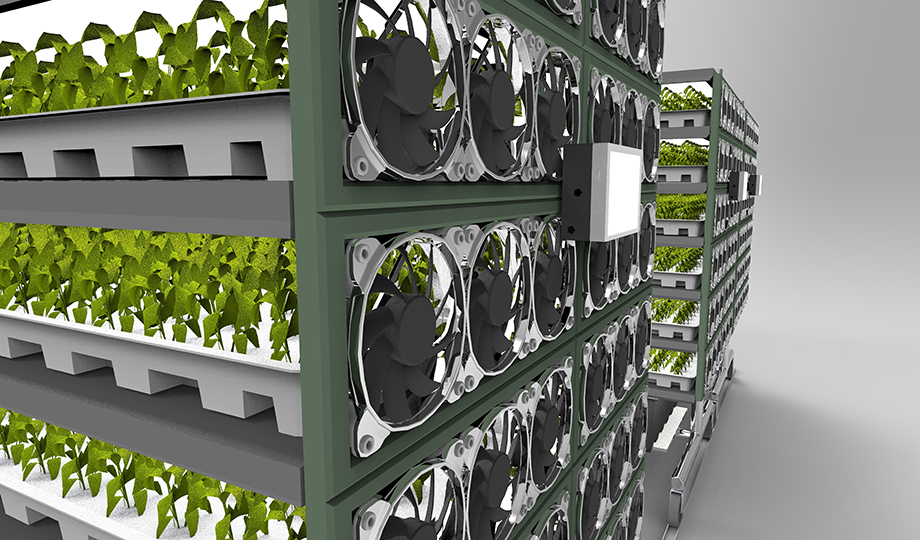
The energy efficiency of vertical farms could soon be boosted by as much as 20 per cent thanks to a new system developed by a student.
vFarm, by Brunel University London design student Jonny Reader uses OLEDs – organic light-emitting diodes – and smart automation to significantly reduce the amount of power used in vertical farming.
The new system, which has already attracted significant interest from industry, will be unveiled at Made in Brunel in June.
Popular in Asia and gaining momentum elsewhere, vertical farming is the practice of producing crops in stacked layers, allowing for better use of space and resources.
Already a billion-dollar industry, its popularity is expected to soar over the coming years as costs come down.
“Current agriculture uses 70 per cent of the world’s pumped water, and accounts for 70 per cent of water contamination and 33 per cent of global warming,” said 21-year-old Jonny, from High Wycombe.
“It also causes all kinds of toxic effects from the pesticides used. Vertical farming is a way of taking it inside – you use five per cent of the water traditional farming uses and don’t need pesticides, because you’re in an enclosed environment.”
OLEDs
Where current vertical farms use traditional LEDs, vFarm uses OLEDs, which produce less heat and have a higher energy efficiency.
Importantly, OLED panels are also significantly thinner than their LED equivalents, meaning greater yields can be achieved at shorter heights.
Whilst the price of OLEDs is currently prohibitive in most circumstances, Jonny predicts costs will fall heavily as the technology gains traction.
vFarm also aims to increase efficiency and yield through the use of automation, using a series of sensors to help control factors such as temperature and humidity.
“It can read the current temperature, how much water there is in the reservoir, light intensity and how much power it’s drawing,” said Jonny. “Everything is automatic.”
“Though you can also do things like manually turn the lights on or off, or the fans on or off, if you like.”
